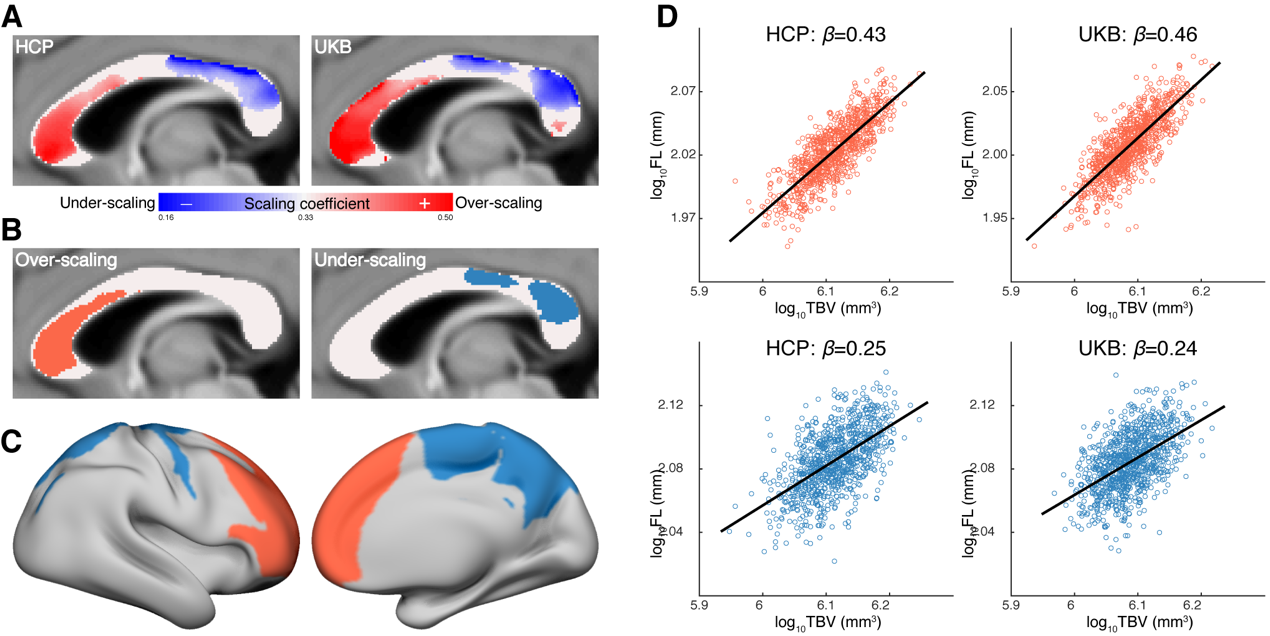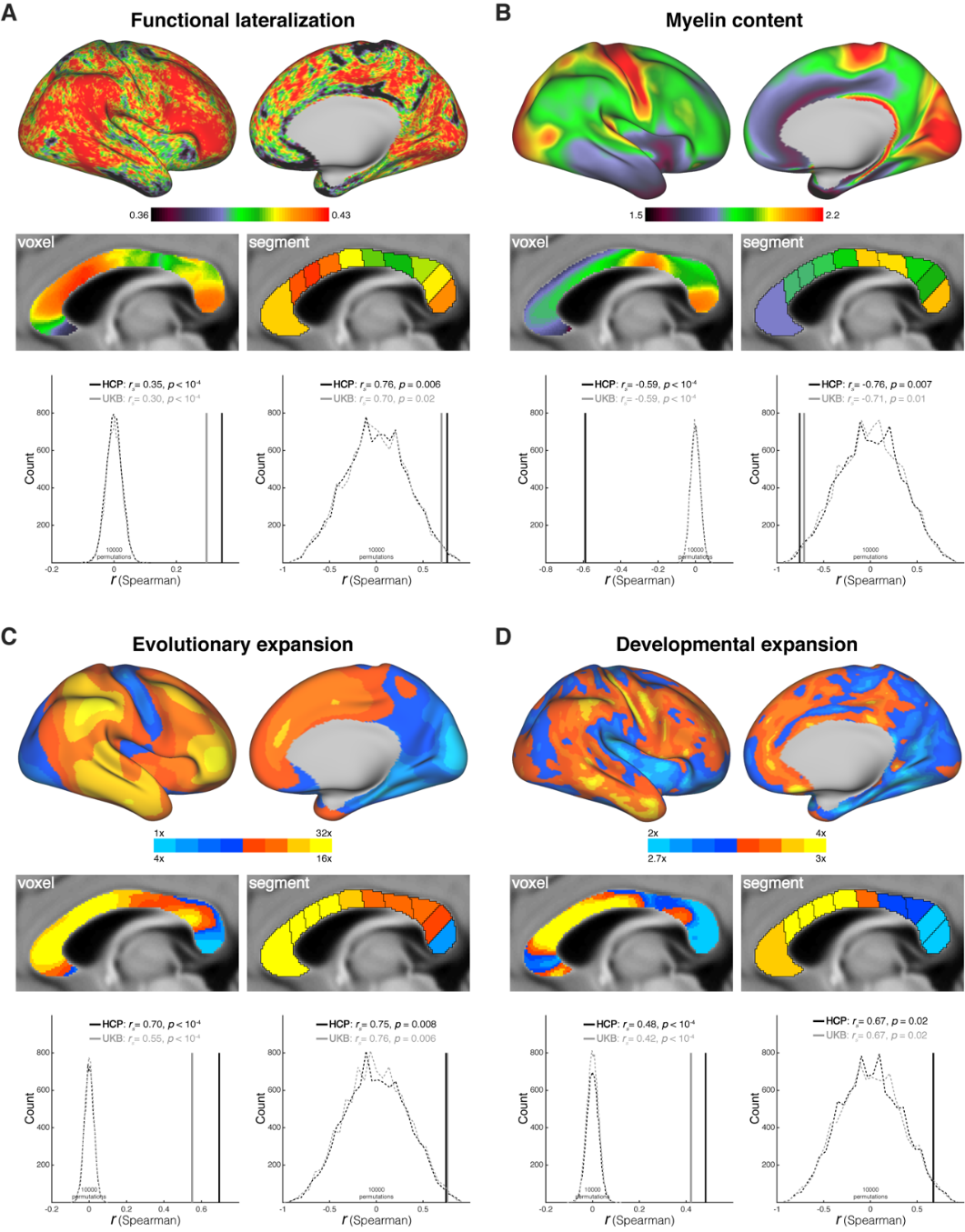In April 2022, Dr. Gaolang Gong’s group at the State Key Laboratory of Cognitive Neuroscience and Learning, Beijing Normal University, has online published their work entitled “Callosal fiber length scales with brain size according to functional lateralization, evolution, and development” in the Journal of Neuroscience. The study showed a substantial difference in the length increase between the callosal fibers that connect the two hemispheres, replicated in two large healthy cohorts. Together, the study demonstrates that reorganization of interhemispheric fibers length according to brain size is intrinsically related to fiber composition, functional lateralization, cortical myelin content, and evolutionary and developmental expansion.
Total brain size varies dramatically across evolution, development, and individuals. An increase in brain size has a significant impact on brain circuits. In larger brains, fiber length is inevitably increased, accompanied by a longer delay in conduction and slower information transfer. While the fiber length adjustment to brain size has been assumed uniform so far, heterogeneity in fiber length scaling may reveal adaptive principles underlying brain development and evolution.
The study assessed whether length scaling variations exist according to brain size within the corpus callosum (CC), the principal white matter (WM) bundle supporting the communication between the two brain hemispheres. Specifically, the midsagittal CC (mCC) boundary was manually outlined. For each mCC voxel, the average length was calculated from dMRI tractography, and the scaling coefficient with brain size was estimated using allometric analyses (Figure 1).
Figure 1. Callosal fiber variation in length scaling with brain size.
The study revealed substantial variation in length scaling with brain size among callosal fibers, ranging from under-scaling to iso-scaling to over-scaling, replicated in two large healthy cohorts. Fiber length under-scaling was mainly observed in callosal fibers connecting the precentral gyrus and parietal cortices, whereas over-scaling mainly involved callosal fibers connecting the prefrontal cortices (Figure 2).
Figure 2. Callosal fibers of length over-scaling or under-scaling with brain size.
Notably, the variation in such length scaling was biologically meaningful: the length scaling of callosal fibers significantly correlated with underlying fiber composition, as well as with human functional lateralization, myelin content, and evolutionary and developmental expansion of the fiber-connected cortical regions (Figure 3). Validation analyses confirmed excellent reproducibility and robustness of these observations.
Figure 3. Relevance to cortical measures.
In conclusion, the current findings of callosal fiber variation in length scaling with brain size provide direct empirical evidence for length reorganization among WM fibers in larger brains. These observations also highlight the interactions of evolutionary and developmental constraints with interhemispheric communication.
The paper’s first author is Liyuan Yang, and the corresponding author is Professor Gaolang Gong. The co-authors include other members of Gong’s group and Professor Michel Thiebaut de Schotten in Sorbonne Universities. This research was supported by the National Natural Science Foundation of China and Beijing Normal University.
Lab website: http://gonglab.bnu.edu.cn
Paper link: Yang, L., Zhao, C., Xiong, Y., Zhong, S., Wu, D., Peng, S., Schotten, M. T. de., Gong, G. (2022). Callosal fiber length scales with brain size according to functional lateralization, evolution, and development. Journal of Neuroscience, 42(17), 3599–3610.
https://doi.org/10.1523/JNEUROSCI.1510-21.2022





